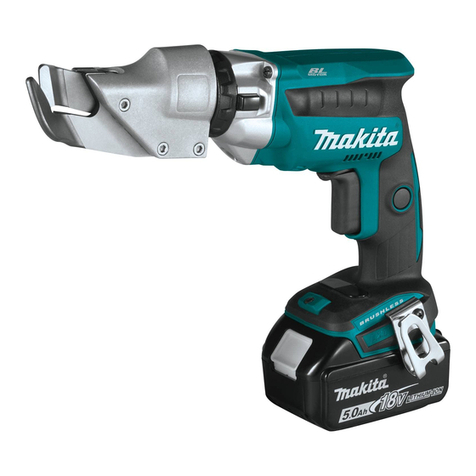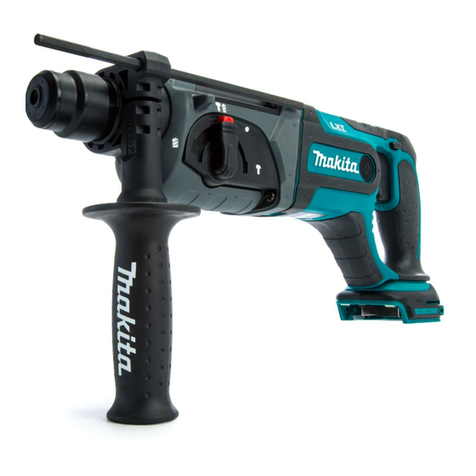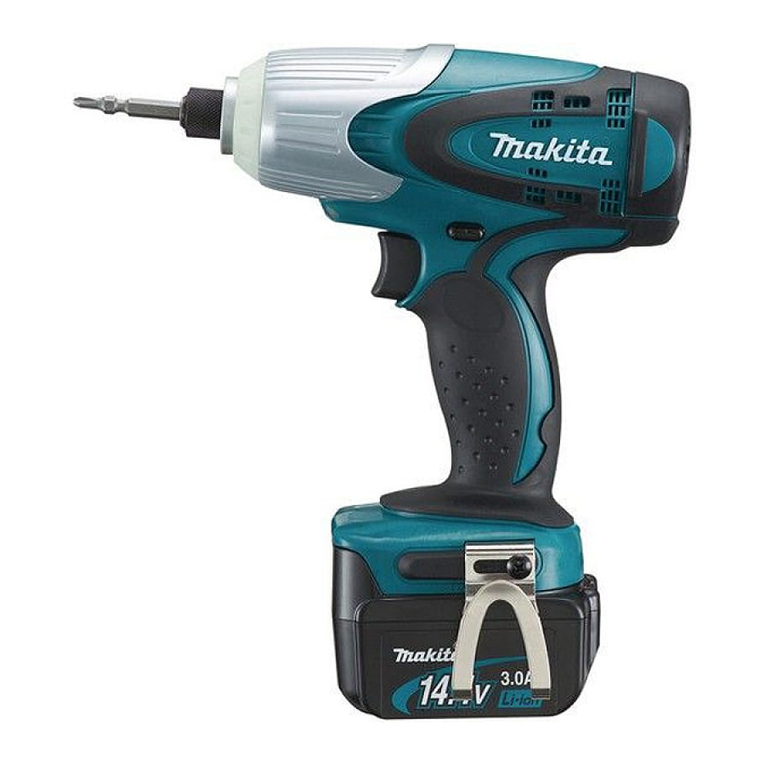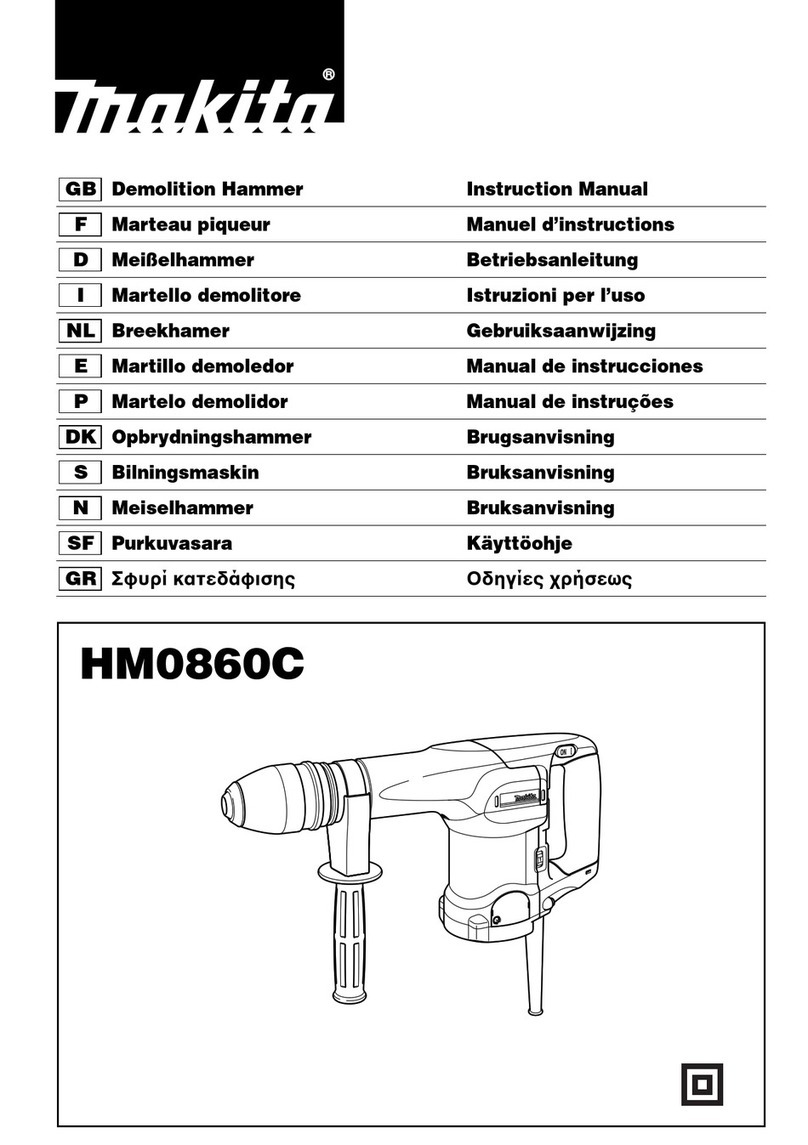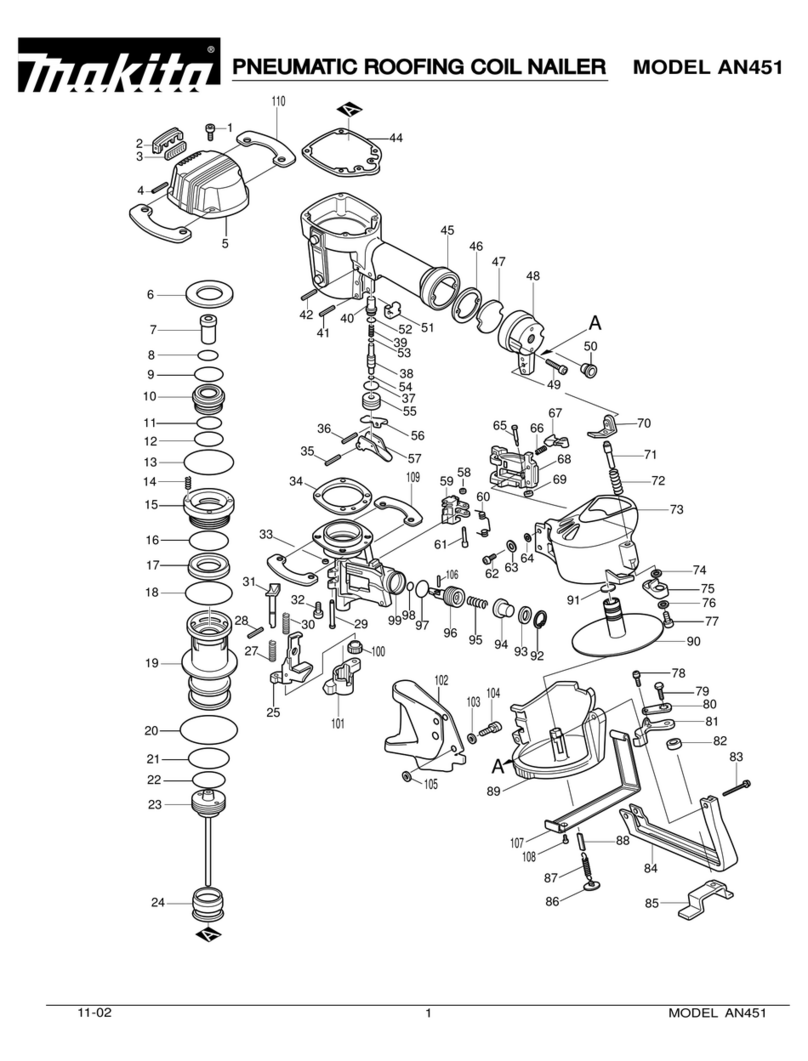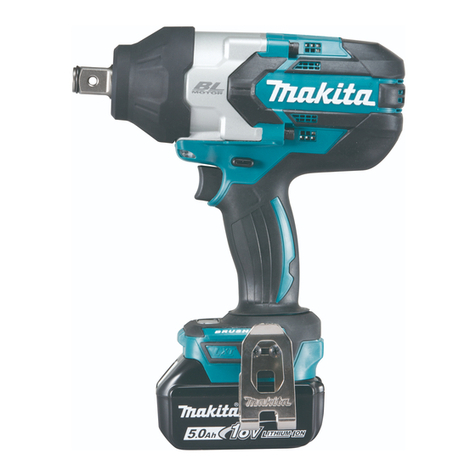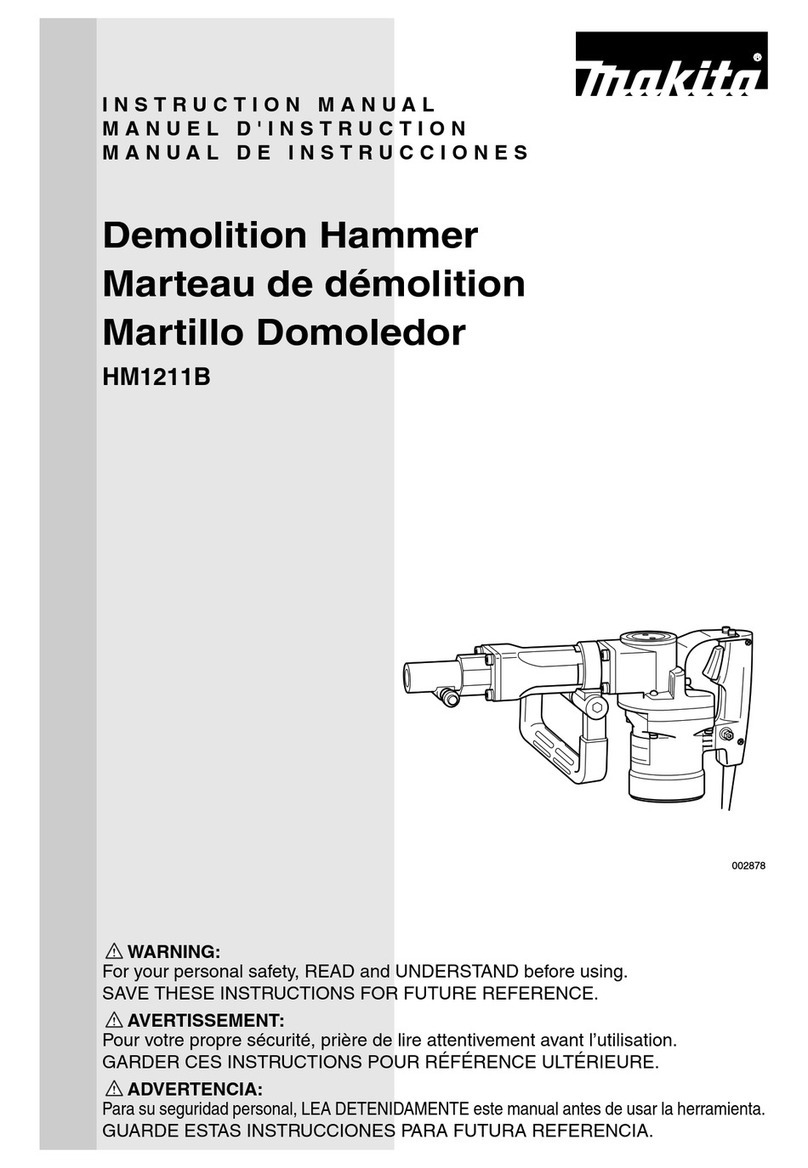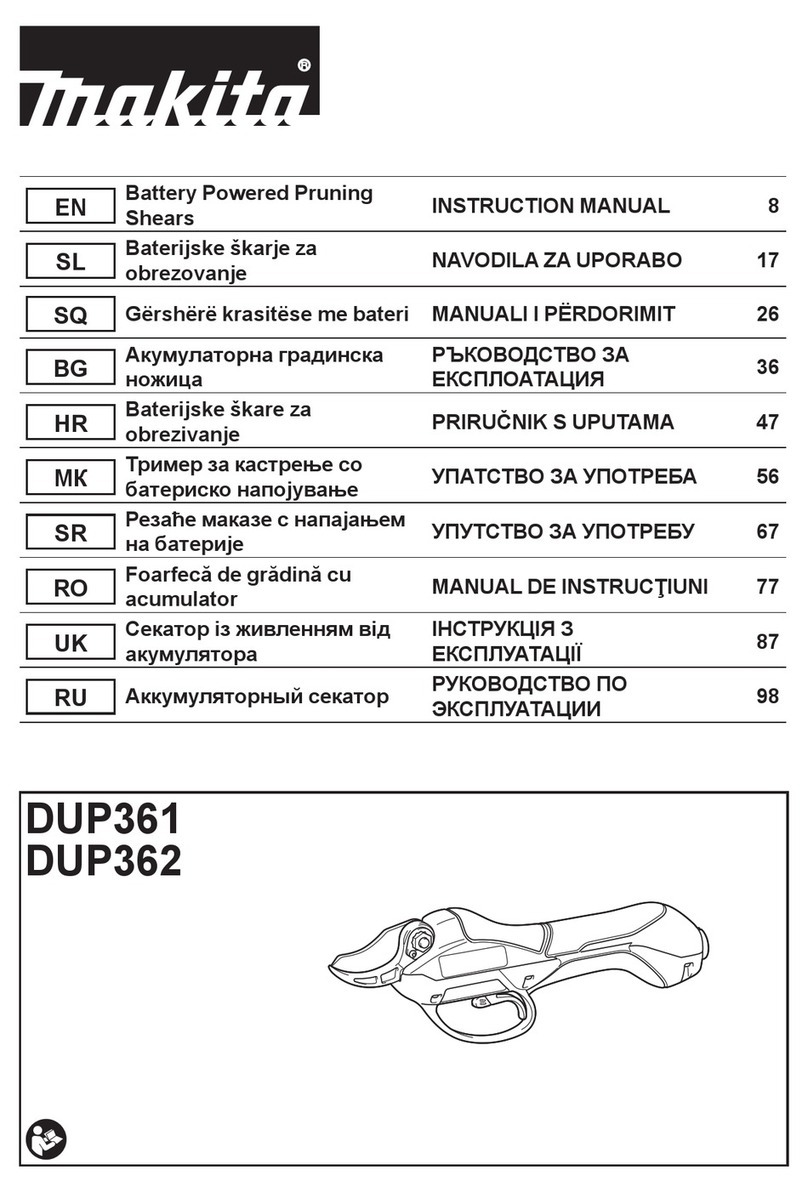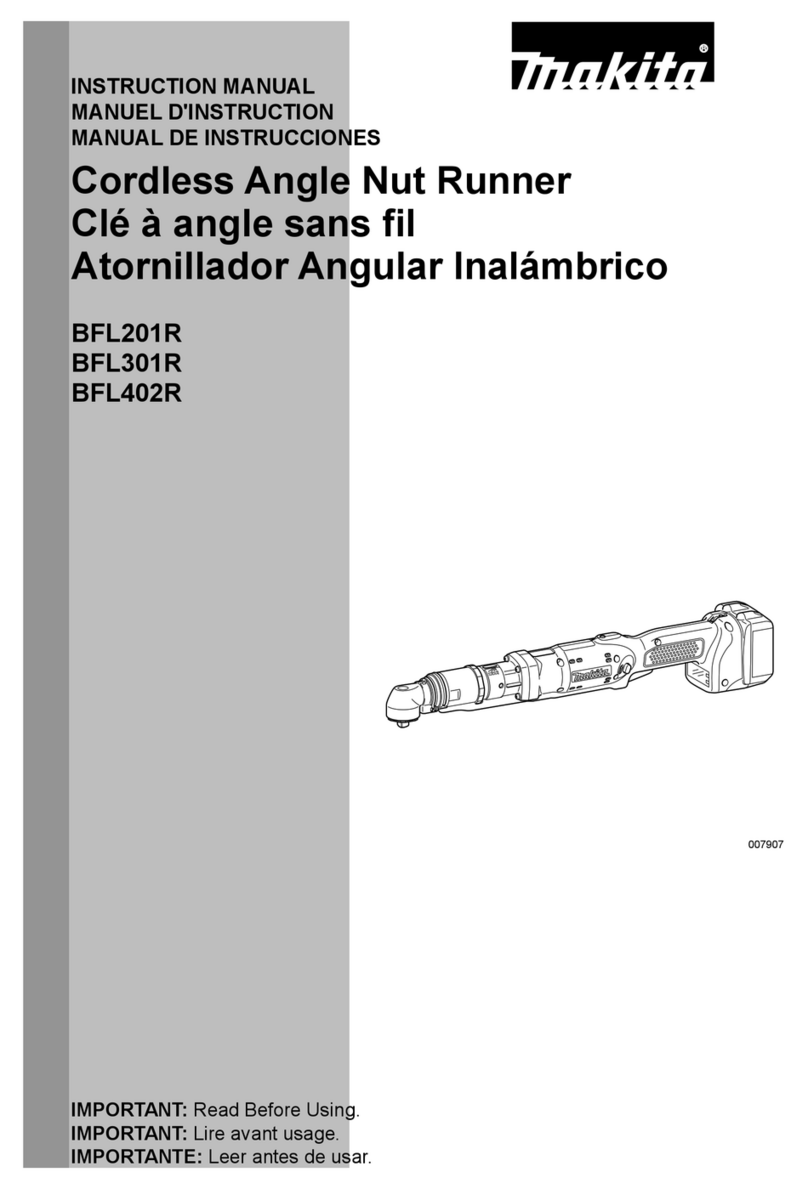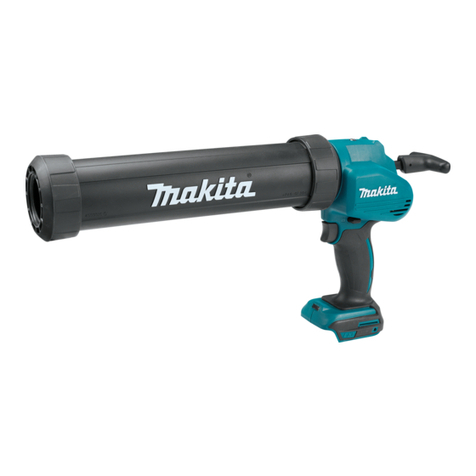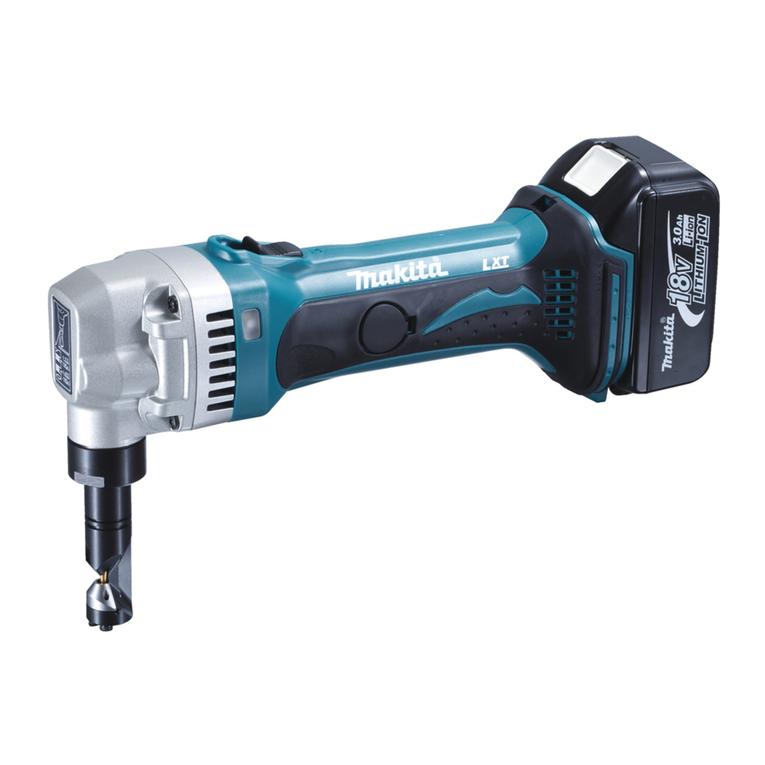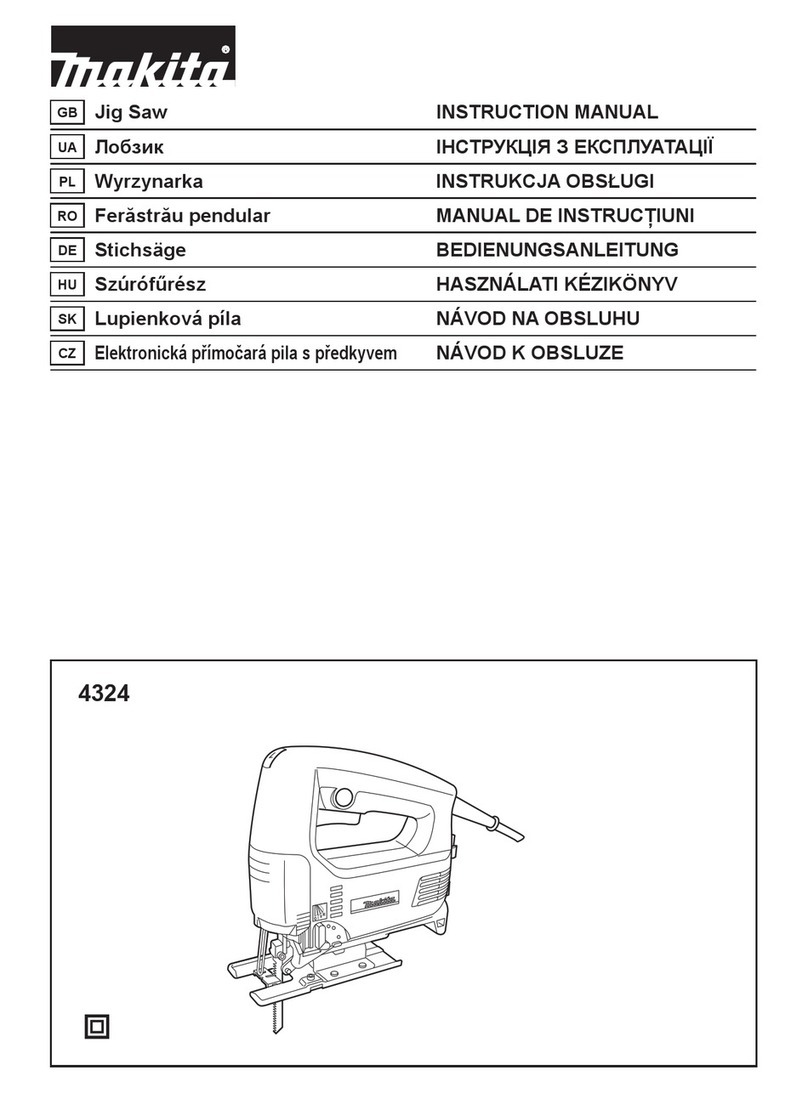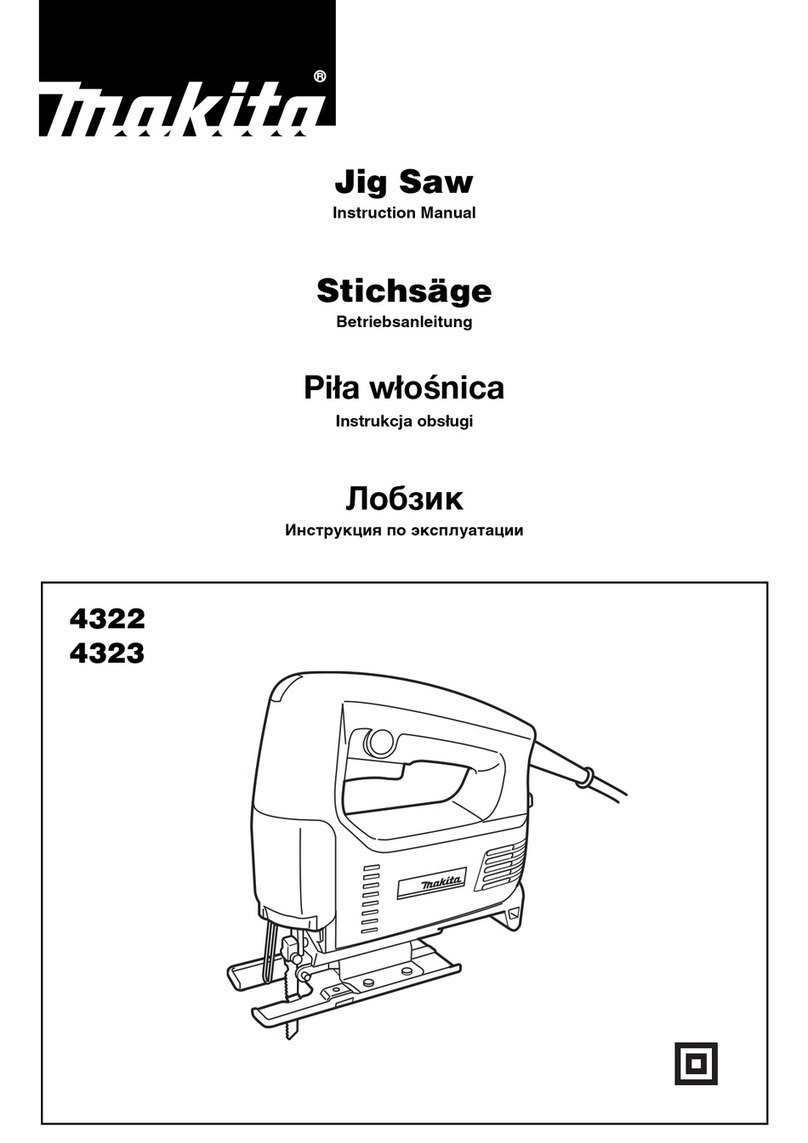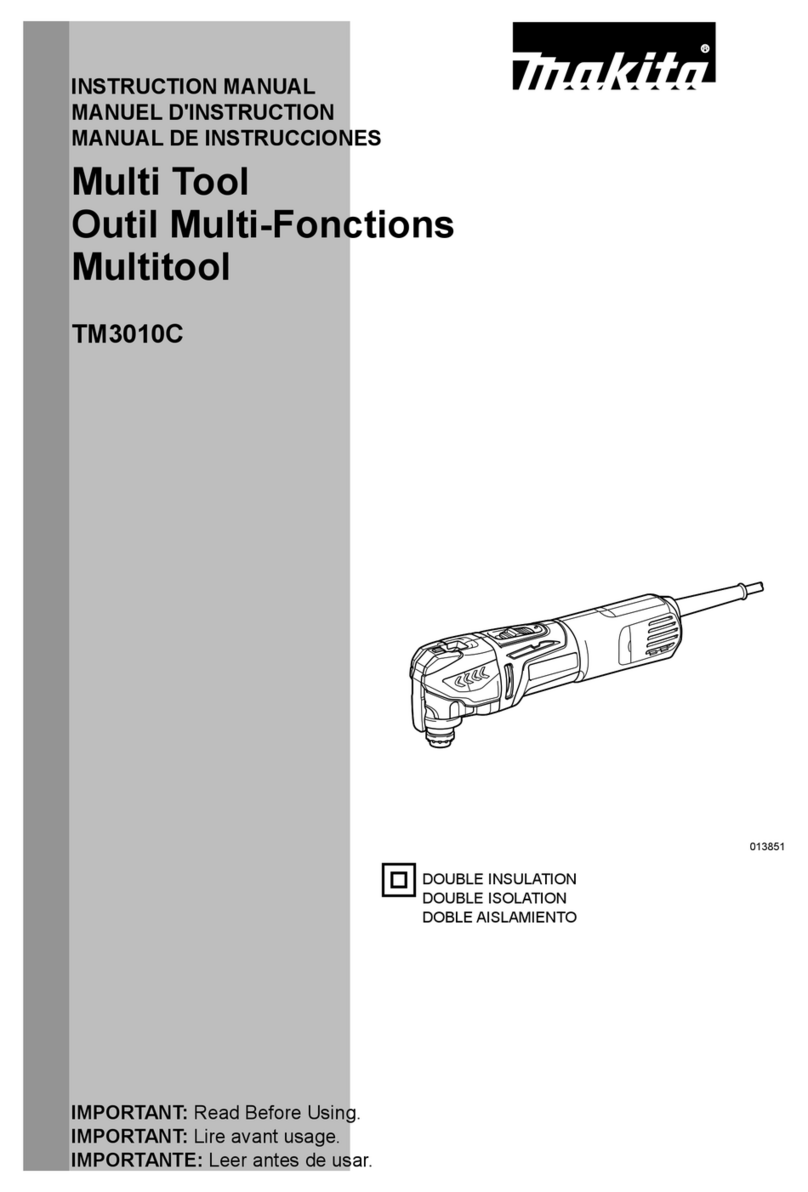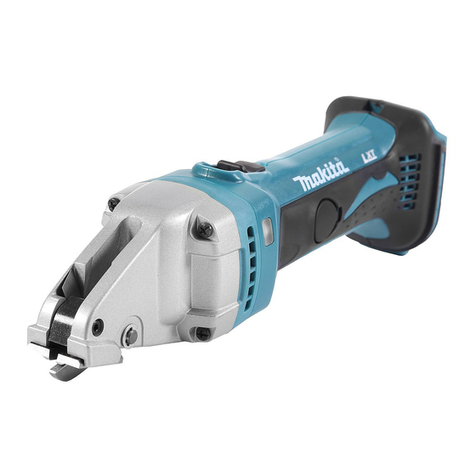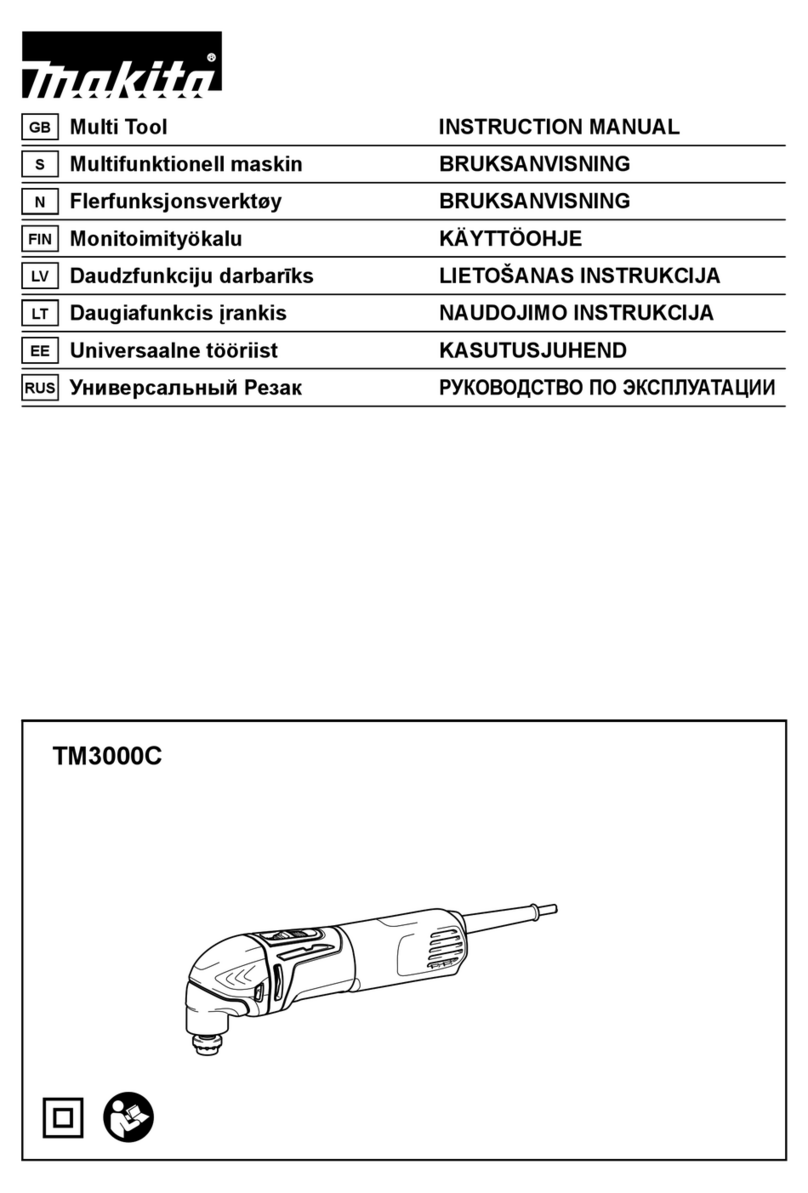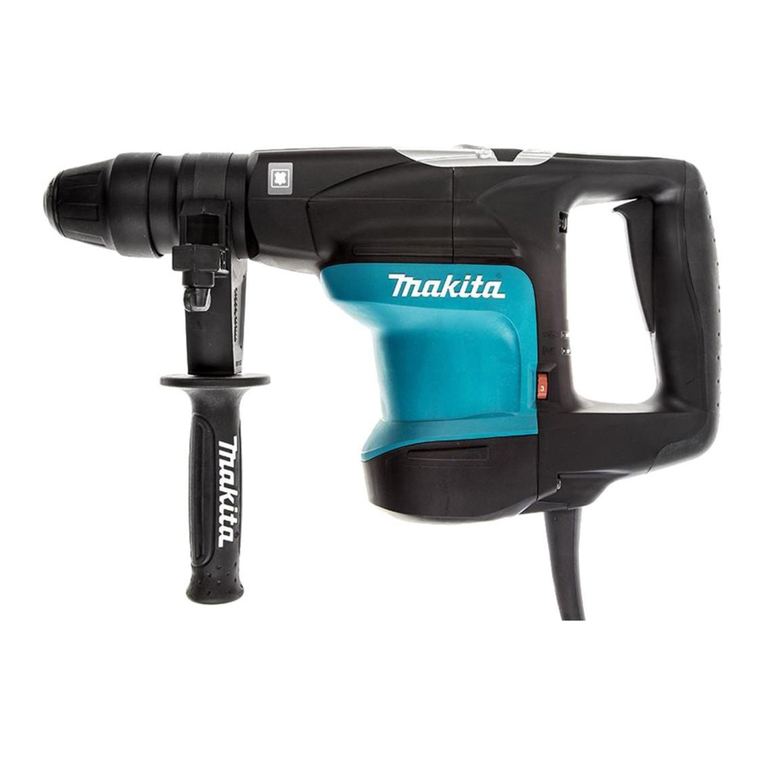
9ENGLISH
7 . Do not touch moving hazardous parts before
the tool is disconnected from the mains and/or
the battery pack is removed from the tool.
8. Always wear substantial footwear and long
trousers while operating the tool.
9 . Disconnect the supply and/or remove the
battery pack from the tool:
•w h e n e v e r t h e t o o l i s l e f t b y t h e u s e r ,
•b e f o r e c l e a r i n g a b l o c k a g e ,
•b e f o r e c h e c k i n g , c l e a n i n g o r w o r k i n g o n t h e
t o o l ,
after striking aforeign object to inspect the
t o o l f o r d a m a g e ,
•i f t h e t o o l s t a r t s t o v i b r a t e a b n o r m a l l y , f o r
i m m e d i a t e l y c h e c k .
10. Never operate the tool with defective guards
or shields, or without safety devices, or if the
cord is damaged or worn.
11. Avoid using the tool in bad weather conditions
especially when there is a risk of lightning.
12. Don’ t use the tool or perform battery charging
operations in the rain.
13. Don’ t leave the tool in rain or wet locations.
14 . Be careful not to catch foreign matter between
the shear blades. If the shear blades are jammed
with foreign matter, immediately switch o the tool
a n d d i s c o n n e c t t h e b a t t e r y f r o m t h e t o o l . T h e n
r e m o v e t h e f o r e i g n m a t t e r f r o m t h e s h e a r b l a d e s .
15. Never hold the branch you are pruning with
your free hand. K e e p y o u r f r e e h a n d a w a y f r o m
t h e c u t t i n g a r e a . N e v e r t o u c h t h e s h e a r b l a d e s ,
t h e y a r e v e r y s h a r p a n d y o u m a y c u t y o u r s e l f .
16 . Don’ t force the tool to make it cut. Y o u c o u l d
slip and injure yourself or cut something else
u n i n t e n t i o n a l l y .
17 .
Avoid cutting electrical wires that may be hidden.
18. Always check the shear blades carefully
before operation.
19 . Handle the shear blades with extreme care to
prevent cuts or injury from the shear blades.
20. Disconnect the battery from the tool after each
use and before attempting to perform inspec-
tion or maintenance.
21. W hen not in use, always keep the tool in its
holster.
Battery tool use and care
1. Avoid dangerous environment. Don' t use the
tool in damp or wet locations or expose it to
rain. W ater entering the tool will increase the
risk of electric shock.
2. Recharge only ith the charger specied by
the manufacturer. A c h a r g e r t h a t i s s u i t a b l e f o r
one type of battery pack may create arisk of re
w h e n u s e d w i t h a n o t h e r b a t t e r y p a c k .
3. Use poer tools only ith specically desig-
nated battery packs. U s e o f a n y o t h e r b a t t e r y
packs may create arisk of injury and re.
4 . W hen battery pack is not in use, keep it away
from other metal objects, like paper clips,
coins, keys, nails, screws or other small metal
objects, that can make a connection from one
terminal to another. S h o r t i n g t h e b a t t e r y t e r m i -
nals together may cause burns or are.
5.
Under abusive conditions, liquid may be ejected
from the battery; avoid contact. If contact acci-
dentally occurs, ush ith ater. If liuid con-
tacts eyes, additionally seek medical help. L i q u i d
ejected from the battery may cause irritation or burns.
6 . Do not dispose of the batteryies in a re. The
cell may explode. Check with local codes for
possible special disposal instructions.
7 . Do not open or mutilate the battery(ies).
Released electrolyte is corrosive and may
cause damage to the eyes or skin. It may be
toxic if swallowed.
8.
Do not charge battery in rain, or in wet locations.
Service
1. Have your poer tool serviced by a ualied
repair person using only identical replacement
parts. T h i s w i l l e n s u r e t h a t t h e s a f e t y o f t h e p o w e r
t o o l i s m a i n t a i n e d .
2. Follow instruction for lubricating and chang-
ing accessories.
3. Keep handles dry, clean and free from oil and
grease.
WARNING: DO NOT let comfort or familiarity
with product (gained from repeated use) replace
strict adherence to safety rules for the subject
product. MISUSE or failure to follow the safety
rules stated in this instruction manual may cause
serious personal injury.
SAVE THESE INSTRUCTIONS.
WARNING: DO NOT let comfort or familiarity
with product (gained from repeated use) replace
strict adherence to safety rules for the subject
product. MISUSE or failure to follow the safety
rules stated in this instruction manual may cause
serious personal injury.
Important safety instructions for
battery cartridge
1. Before using battery cartridge, read all instruc-
tions and cautionary markings on (1) battery
charger, (2) battery, and (3) product using
battery.
2. Do not disassemble or tamper with the battery
cartridge. It may result in are, excessive heat,
o r e x p l o s i o n .
3. If operating time has become excessively
shorter, stop operating immediately. It may
result in a risk of overheating, possible burns
and even an explosion.
4 .
If electrolyte gets into your eyes, rinse them out
with clear water and seek medical attention right
away. It may result in loss of your eyesight.
5. Do not short the battery cartridge:
( 1) Do not touch the terminals with any con-
ductive material.
( 2) Avoid storing battery cartridge in a con-
tainer with other metal objects such as
nails, coins, etc.
( 3) Do not expose battery cartridge to water
or rain.
